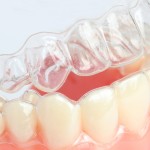
Following the active phase of orthodontic treatment a period retention normally follows to prevent the tendency for teeth to return to their original position. The causes for this relapse are unknown and almost all patients will require retention and a range of different strategies are used.
The aim of this review was to evaluate the effects of different retention strategies used to stabilise tooth position after orthodontic braces.
Methods
Searches were conducted in the Cochrane Oral Health Group’s Trials Register, Cochrane Central Register of Controlled Trials (CENTRAL) , Medline, Embase, US National Institutes of Health Trials Registry and The World Health Organization (WHO) Clinical Trials Registry Platform. This was supplemented by hand searches of the conference proceedings and abstracts from the British Orthodontic Conference, the European Orthodontic Conference and the International Association for Dental Research (IADR) from 2011 to 2015 and the bibliographies of identified studies.
Two review authors independently screened eligible studies, assessed the risk of bias in the trials and extracted data. Randomised controlled trials (RCTs) involving children and adults who had had retainers fitted or adjunctive procedures undertaken to prevent relapse following orthodontic treatment with braces were considered. Analysis followed standard Cochrane approaches.
Results
- 15 studies involving 1722 patients were included.
- 4 studies had a low risk of bias, 4 an unclear risk and 7 a high risk.
- 4 comparisons were evaluated:-
- Removable retainers versus fixed retainers ( 3 studies)
- There was low quality evidence that thermoplastic removable retainers provided slightly poorer stability in the lower arch than multistrand fixed retainers: MD (Little’s Irregularity Index, 0 mm is stable) 0.6 mm (95% CI 0.17 to 1.03).
- Results on retainer failure were inconsistent.
- There was low quality evidence of less gingival bleeding with removable retainers: RR 0.53 (95%CI; 0.31 to 0.88)
- participants found fixed retainers more acceptable to wear, with a mean difference on a visual analogue scale (VAS; 0 to 100; 100 being very satisfied) of -12.84 (95% CI -7.09 to -18.60).
- Different types of fixed retainers (4 studies)
- The studies did not report stability, adverse effects or participant satisfaction.
- Data from 3 studies (228 patients) comparing polyethylene ribbon bonded retainer versus multistrand retainer was pooled showing no evidence of a difference in failure rates. RR = 1.10 (95%CI; 0.77 to 1.57).
- It was also possible to pool the data from two trials (174 patients) that compared the same types of upper fixed retainers, with a similar finding: RR =1.25 (95%CI; 0.87 to 1.78).
- Different types of removable retainers (8 studies)
- One study at low risk of bias comparing upper and lower part-time thermoplastic versus full-time thermoplastic retainer showed no evidence of a difference in relapse (graded moderate quality evidence).
- Another study, comparing part-time and full-time wear of lower Hawley retainers, found no evidence of any difference in relapse (low quality evidence).
- Two studies at high risk of bias suggested that stability was better in the lower arch for thermoplastic retainers versus Hawley, and for thermoplastic full-time versus Begg (full-time) (both low quality evidence).
- In one study, participants wearing Hawley retainers reported more embarrassment more often than participants wearing thermoplastic retainers: RR 2.42 (95% CI 1.30 to 4.49; one trial, 348 participants, high risk of bias, low quality evidence). They also found Hawley retainers harder to wear.
- There was conflicting evidence about survival rates of Hawley and thermoplastic retainers.
- Combination of upper thermoplastic and lower bonded versus upper thermoplastic with lower adjunctive procedures versus positioner (1 study).
- The study found that there was no evidence of a difference in relapse between the combination of an upper thermoplastic and lower canine to canine bonded retainer and the combination of an upper thermoplastic retainer and lower interproximal stripping, without a lower retainer. Both these approaches are better than using a positioner as a retainer.
Conclusions
The authors concluded:
We did not find any evidence that wearing thermoplastic retainers full-time provides greater stability than wearing them part-time, but this was assessed in only a small number of participants.
Overall, there is insufficient high quality evidence to make recommendations on retention procedures for stabilising tooth position after treatment with orthodontic braces. Further high quality RCTs are needed.
Comments
This review updates the 2006 version of this Cochrane review. While this update has been able to include an additional 10 studies the limited quality of the available evidence means that firm recommendations on orthodontic retention strategies cannot be made.
A 2014 review of Hawley and thermoplastic retainers (Dental Elf 4th Jun 2014) had slightly different inclusion criteria to this review leading to a slight differences in the findings. Although both reviews highlight the need for better quality evidence to inform clinical practice.
Links
Primary paper
Littlewood SJ, Millett DT, Doubleday B, Bearn DR, Worthington HV. Retention procedures for stabilising tooth position after treatment with orthodontic braces. Cochrane Database of Systematic Reviews 2016, Issue 1. Art. No.: CD002283. DOI: 10.1002/14651858.CD002283.pub4.
Other references
Dental Elf – 14th Mar 2014 – Orthodontic retention – cost analysis of three different appliances

Orthodontic retention – little high quality evidence to recommend any one approach https://t.co/kI1CuhDKe9
Little high quality evidence to make recommendations on orthodontic retention procedures https://t.co/kI1CuhDKe9
Orthodontic retention – little high quality evidence https://t.co/kI1CuhDKe9
High quality evidence is lacking for orthodontic retention procedures
https://t.co/kI1CuhDKe9
Don’t miss – Orthodontic retention – little high quality evidence to recommend any one approach https://t.co/kI1CuhDKe9
[…] Orthodontic retention – little high quality evidence to recommend any one approach to over another […]